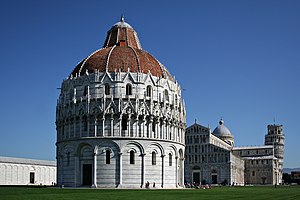1064
Year 1064 (MLXIV) was a leap year starting on Thursday (link will display the full calendar) of the Julian calendar.
| Millennium: | 2nd millennium |
|---|---|
| Centuries: | |
| Decades: | |
| Years: |
| 1064 by topic |
|---|
| Leaders |
|
| Birth and death categories |
| Births – Deaths |
| Establishments and disestablishments categories |
| Establishments – Disestablishments |
| Gregorian calendar | 1064 MLXIV |
| Ab urbe condita | 1817 |
| Armenian calendar | 513 ԹՎ ՇԺԳ |
| Assyrian calendar | 5814 |
| Balinese saka calendar | 985–986 |
| Bengali calendar | 471 |
| Berber calendar | 2014 |
| English Regnal year | N/A |
| Buddhist calendar | 1608 |
| Burmese calendar | 426 |
| Byzantine calendar | 6572–6573 |
| Chinese calendar | 癸卯年 (Water Rabbit) 3760 or 3700 — to — 甲辰年 (Wood Dragon) 3761 or 3701 |
| Coptic calendar | 780–781 |
| Discordian calendar | 2230 |
| Ethiopian calendar | 1056–1057 |
| Hebrew calendar | 4824–4825 |
| Hindu calendars | |
| - Vikram Samvat | 1120–1121 |
| - Shaka Samvat | 985–986 |
| - Kali Yuga | 4164–4165 |
| Holocene calendar | 11064 |
| Igbo calendar | 64–65 |
| Iranian calendar | 442–443 |
| Islamic calendar | 456–457 |
| Japanese calendar | Kōhei 7 (康平7年) |
| Javanese calendar | 967–968 |
| Julian calendar | 1064 MLXIV |
| Korean calendar | 3397 |
| Minguo calendar | 848 before ROC 民前848年 |
| Nanakshahi calendar | −404 |
| Seleucid era | 1375/1376 AG |
| Thai solar calendar | 1606–1607 |
| Tibetan calendar | 阴水兔年 (female Water-Rabbit) 1190 or 809 or 37 — to — 阳木龙年 (male Wood-Dragon) 1191 or 810 or 38 |
Events
Europe
- Summer – King Ferdinand I (the Great) conquers more territory in modern-day Portugal and captures Coimbra. He appoints Sisnando Davides to reorganise the economy and administer the lands encircling the city.
- European warriors go to Spain, to participate in the siege of Barbastro. This expedition is sanctioned by Pope Alexander II – and is now regarded as an early form of Crusade.[1]
- Harold Godwinson, Earl of Wessex, is shipwrecked on the shores of Ponthieu (Normandy). He is captured by Count Guy I who takes him as hostage to his castle of Beaurian.
- Duke William I (the Bastard) demands the release of Harold Godwinson from Guy I (after paid a ransom). Harold must swear an oath to aid William to the throne of England.
- Kings Harald Hardrada of Norway and Sweyn II of Denmark agree to a peace agreement. Harald turns his attentions to England where he believes he has a right to the throne.
Seljuk Empire
- April 27 – Alp Arslan, succeeds to the throne as sultan of the Seljuk Empire. He becomes sole ruler of Persia from the river Oxus to the Tigris.
- The Seljuk Turks under Alp Arslan invade Anatolia, and capture Ani after a siege of 25-days. He sacks the city and slaughters its citizens.[2]
- Badr al-Jamali, Fatimid governor of Syria, tries to engineer a pro-Fatimid coup in Aleppo; but the rebellion is suppressed by Musa Yabgu.[3]
Asia
- King Bagrat IV of Georgia captures the fortress city of Samshvilde, the capital of the neighboring Tashir-Dzoraget.
Religion
- Winter – Great German Pilgrimage: Archbishop Siegfried I of Mainz leads a pilgrimage to Jerusalem.
- Michaelsberg Abbey at Siegburg (modern Germany) is founded by Anno II, archbishop of Cologne.
- Construction of the Piazza dei Miracoli (known as Piazza del Duomo) at Pisa in Tuscany begins.
Volcanology
- Sunset Crater Volcano (modern-day Arizona) first erupts (approximate date)
Births
- Adela of Flanders, queen of Denmark (approximate date)
- Beatrice I, countess of Bigorre (approximate date)
- Bořivoj II (or Borivoi), duke of Bohemia (approximate date)
- Danxia Zichun, Chinese Zen Buddhist monk (d. 1117)
- Hugh of Flavigny, French abbot (approximate date)
- Robert Fitz Richard, English nobleman (d. 1136)
Deaths
- August 15 – Ibn Hazm, Andalusian historian and poet (b. 994)
- November 29 – Al-Kunduri, vizier of the Seljuk Empire (b. 1024)
- December 19 – Fujiwara no Nagaie, Japanese nobleman (b. 1005)
- Akkadevi, princess of the Chalukya Dynasty (b. 1010)
- Dromtön, Tibetan monk and founder of Reting Monastery
- Dub dá Leithe (or Dubhdalethe), Irish abbot
- Gozelo I (or Gozelon), count of Montaigu
- Llywelyn Aurdorchog, Welsh nobleman (approximate date)
- Yaakov ben Yakar, German Jewish rabbi (b. 990)
- Yi Yuanji, Chinese painter (approximate date)
References
- McGrank, Lawrence (1981). "Norman crusaders and the Catalan reconquest: Robert Burdet and te principality of Tarragona 1129-55". Journal of Medieval History. 7 (1): 67–82. doi:10.1016/0304-4181(81)90036-1.
- Baynes, T.S. (2008). Anni, Encyclopædia Britannica (9th ed.). New York: Charles Scribner's Sons, p. 72.
- David Nicolle (2013). Osprey: Manzikert 1071: The breaking of Byzantium, p. 20. ISBN 978-1-78096-503-1.
- Anales de Tlatelolco, Rafael Tena INAH–CONACULTA 2004, p. 55.
This article is issued from Wikipedia. The text is licensed under Creative Commons - Attribution - Sharealike. Additional terms may apply for the media files.
